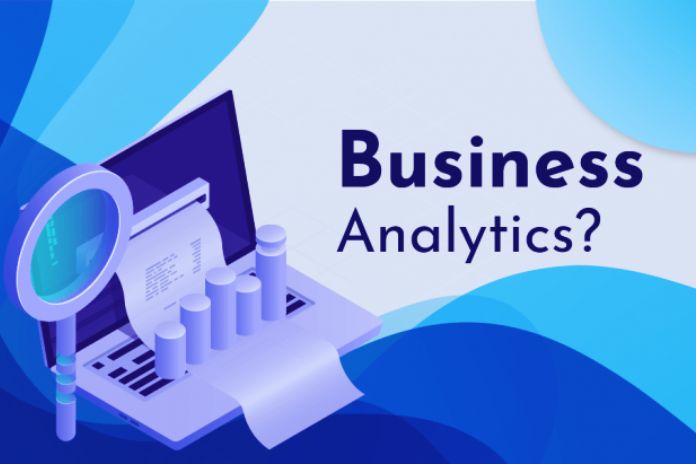Business Analytics — also known as “business analysis” or “enterprise analysis” in free translation — can be defined as a process that involves evaluating the data a company has to use to make decisions. Data-driven decisions.
In other words, the intention behind the concept is to enable better-founded actions, in addition to a highly technological data study, which allows the organization to have greater predictability regarding its market.
The strategy aims for more actions than theories and has the delivery of practical results, speed, and optimization as its main characteristics. With its implementation, it becomes possible to issue reports and obtain quantitative and qualitative notions about a topic. Analyzing other elements that collaborate for an in-depth exploration is also feasible.
Do you want to understand more about this concept, learn how it differs from Business Intelligence, and how its application can occur within a business? Read on!
What Can Be Understood By Business Analytics, And What Is Its Importance?
Complementing the introductory definition, it is possible to understand Business Analytics as a kind of “interactive exploration” — but also methodical — of the data available to a company. This practice uses methodologies and advanced technologies to analyze information in diverse formats, mainly expressive volumes.
According to a survey by McKinsey, a significant percentage of companies are already using this method, aiming at more significant chances of growth. After all, among the benefits of its application — including the retail sector — it is possible to highlight:
- more excellent reliability in the information collected;
- greater flexibility in the preparation of plans;
- an improvement in the organization of processes;
- the reduction of failures and errors;
- the removal of duplicated activities;
- the possibility of drawing better-targeted digital marketing strategies;
- a better assessment of market competitors.
The cost-benefit of its implementation already proves to be an advantage; after all, the expenses associated with the admission of qualified personnel for the application of Business Analytics or the handling of related tools, although variable, remain affordable and bring positive returns to organizations.
As a plus, it still has to be said that its collaborative use with Business Intelligence — or with Big Data — raises the levels of analysis efficiency. Therefore, it is interesting to implement them jointly in corporate strategic planning. In management, such an application can occur in different areas, such as:
- in finance because the professionals who work in the department now have greater ease in pricing, can monitor market metrics more accurately, have the chance to predict sales trends, etc.;
- in HR (Human Resources), enabling those responsible for the sector to have insights based on the behavior adopted by the staff, also allowing the definition of more accurate turnover rates, the monitoring of employee performance, and the comparison of these performance levels based on in the educational institutions from which each contributor comes;
- in the supply chain, providing opportunities for better risk management, inventory monitoring, monitoring of defined targets, etc.;
- In marketing, by identifying consumer behavior based on data, it becomes feasible to outline the organization’s target audience and, therefore, better target campaigns.
What Are The Differences Between Business Intelligence?
Both concepts bear many similarities, so a more straightforward way to understand what distinguishes them is to know that one can be seen as the “evolution” of the other. Business Analytics was “born” from Business Intelligence, developing and perfecting its metrics and techniques.
However, it is essential to emphasize that this does not mean the second has become unnecessary or outdated for organizations. It’s just different methods.
Business Intelligence is beneficial, for example, for managers, helping them define strategies and planning, especially when there is no starting point. Business Analytics, in turn, includes other statistics-related features, making it more comprehensive.
How Can The Concept Be Implemented In A Business?
Below, see a step-by-step guide we have prepared so that you can structure a Business Analytics strategy to implement the concept in your company.
Identify Business Needs
The first step is to survey the organization’s needs to identify which aspects could be improved or which barriers should be resolved. At this early stage, it is natural — and essential — that some questions arise, such as:
- What data are currently available?
- How is it possible to use them?
- Is the volume now functional and sufficient?
Evaluate The Data
Next, there will be a kind of “filtering” of the data. The proposal is to recognize both actionable insights and general patterns that can point to the best paths. Afterward, all elements associated with the target variable will be sought from the statistical analysis.
At this point, it is also necessary to perform a regression analysis that aims to recognize quick and straightforward predictions.
Predict The Possibilities
As said, Business Analytics is more about actions and less about theories. At this stage, the time has come to use predictive data modeling practices, including logistic regression, neural networks, and decision trees.
Together, the techniques will show significant insights and patterns for recognizing hidden evidence and relationships of the variables with the most important influence, enabling a comparison between natural and predictive values and calculating eventual failures.
Look For The Most Suitable Solution
In this phase, the results are applied to create hypotheses. With defined goals in mind, it becomes feasible to identify the best solution considering constraints and limitations. The chosen one should be the one that involves a smaller number of possible failures and also management goals that are in line with the strategic objective.
Make Decisions
Based on the scenarios created and the data collected, managers can finally make more effective decisions that will prevent errors; after all, the variables have already been adequately tested in advance.
In the digital age we live in today, using data for a better understanding of the business context and decision-making is a decisive element for success.
ALSO READ: How To Define The Right Sales KPIs For Your B2B Company


